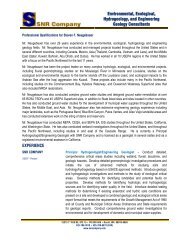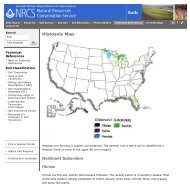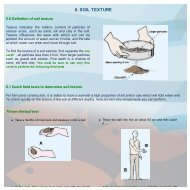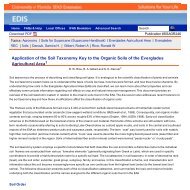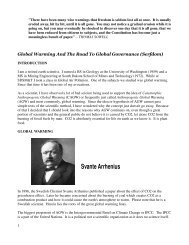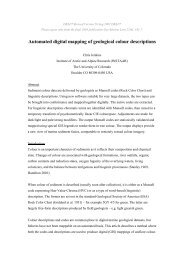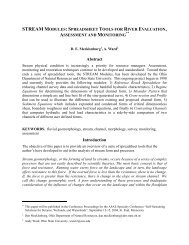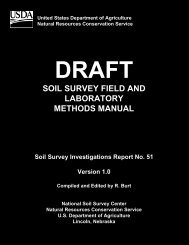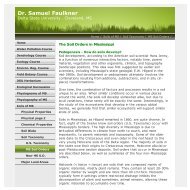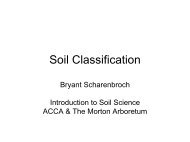chapter 3 fundamentals of fluvial geomorphology and stream ...
chapter 3 fundamentals of fluvial geomorphology and stream ...
chapter 3 fundamentals of fluvial geomorphology and stream ...
Create successful ePaper yourself
Turn your PDF publications into a flip-book with our unique Google optimized e-Paper software.
sediment load is correctly identified (Andrews 1980; Carling 1988;Hey 1997). However, Benson <strong>and</strong> Thomas (1966), Pickup <strong>and</strong>Warner (1976), Webb <strong>and</strong> Walling (1982), Nolan et al. (1987), <strong>and</strong>Lyons et al. (1992) report that the effective <strong>and</strong> bankfulldischarges are not always equivalent. This suggests that theeffective discharge may not always be a direct surrogate for thechannel-forming flow or the bankfull discharge.Although the effective discharge is straightforwardconceptually, <strong>and</strong> has been used for many years, many engineershave expressed concerns that the effective discharge calculationsdo not yield reasonable results in some instances. These problemsmay be attributable to data limitations, insufficient underst<strong>and</strong>ing <strong>of</strong>the morphology <strong>of</strong> the <strong>stream</strong> or to improper calculation procedure.To minimize these uncertainties a st<strong>and</strong>ardized procedure for thedetermination <strong>of</strong> the effective discharge has been developed <strong>and</strong> isoutlined in the following paragraphs. This procedure is intended tohelp investigators avoid many <strong>of</strong> the potential problems that theauthors have experienced in the calculation <strong>of</strong> the effectivedischarge. Interested readers are referred to Biedenharn et al.(2000a) for a more detailed discussion <strong>of</strong> effective dischargecalculation.The method most commonly adopted for determining theeffective discharge is to calculate the total load (tons) transportedby the range <strong>of</strong> flows over a period <strong>of</strong> time by multiplying thefrequency <strong>of</strong> occurrence <strong>of</strong> selected discharge classes (number <strong>of</strong>days) by the median magnitude <strong>of</strong> the sediment load (tons/day)transported by that class <strong>of</strong> flows. While this approach has themerit <strong>of</strong> simplicity, the accuracy <strong>of</strong> the estimate <strong>of</strong> the effectivedischarge is clearly dependent on the calculation procedureadopted. The basic inputs required for calculation <strong>of</strong> effectivedischarge are: 1) flow-duration data, <strong>and</strong> 2) sediment transport asa function <strong>of</strong> <strong>stream</strong> discharge.The first step in an effective-discharge calculation is togroup the discharge data into classes <strong>and</strong> determine the number <strong>of</strong>events occurring in each class during the period <strong>of</strong> record. This isusually accomplished from a flow-duration curve, which is acumulative distribution function <strong>of</strong> measured discharges. A flowdurationcurve shows the percent <strong>of</strong> time a specific discharge isequaled or exceeded during the period <strong>of</strong> record, for which thecurve was developed. From the flow-duration curve, the number <strong>of</strong>days that discharges within the specified class interval occurredcan be calculated. The three critical components that must beconsidered when developing a flow-duration curve are the timebase, the number <strong>of</strong> class interval, <strong>and</strong> the period <strong>of</strong> record.Conventionally, values <strong>of</strong> mean daily discharge are used tocompute the flow-duration curve. Although this is convenient <strong>and</strong>Fundamentals <strong>of</strong> Fluvial Geomorphology <strong>and</strong> Stream Processes 37



